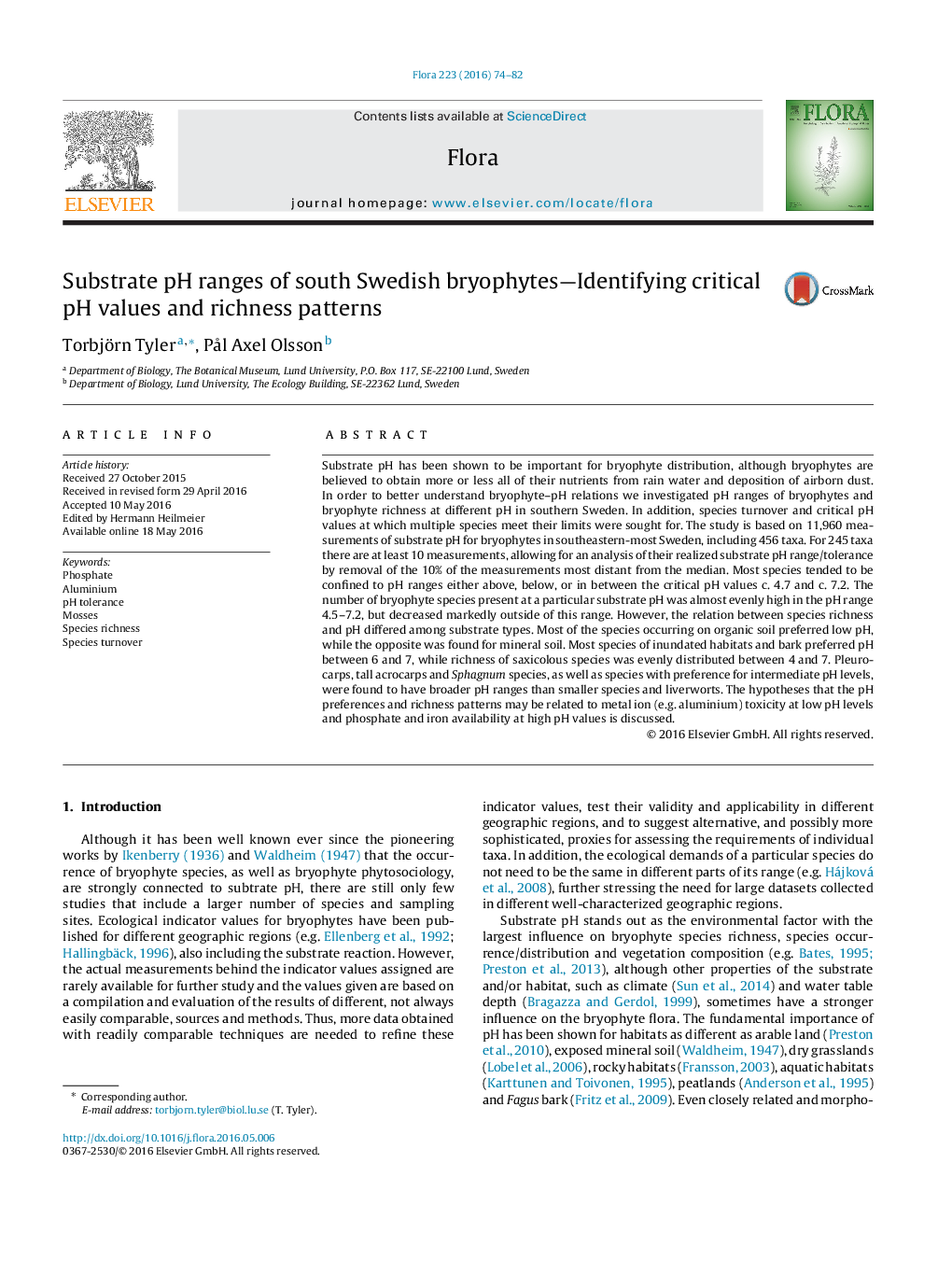| کد مقاله | کد نشریه | سال انتشار | مقاله انگلیسی | نسخه تمام متن |
|---|---|---|---|---|
| 8470276 | 1549936 | 2016 | 9 صفحه PDF | دانلود رایگان |
عنوان انگلیسی مقاله ISI
Substrate pH ranges of south Swedish bryophytes-Identifying critical pH values and richness patterns
دانلود مقاله + سفارش ترجمه
دانلود مقاله ISI انگلیسی
رایگان برای ایرانیان
کلمات کلیدی
موضوعات مرتبط
علوم زیستی و بیوفناوری
علوم کشاورزی و بیولوژیک
بوم شناسی، تکامل، رفتار و سامانه شناسی
پیش نمایش صفحه اول مقاله

چکیده انگلیسی
Substrate pH has been shown to be important for bryophyte distribution, although bryophytes are believed to obtain more or less all of their nutrients from rain water and deposition of airborn dust. In order to better understand bryophyte-pH relations we investigated pH ranges of bryophytes and bryophyte richness at different pH in southern Sweden. In addition, species turnover and critical pH values at which multiple species meet their limits were sought for. The study is based on 11,960 measurements of substrate pH for bryophytes in southeastern-most Sweden, including 456 taxa. For 245 taxa there are at least 10 measurements, allowing for an analysis of their realized substrate pH range/tolerance by removal of the 10% of the measurements most distant from the median. Most species tended to be confined to pH ranges either above, below, or in between the critical pH values c. 4.7 and c. 7.2. The number of bryophyte species present at a particular substrate pH was almost evenly high in the pH range 4.5-7.2, but decreased markedly outside of this range. However, the relation between species richness and pH differed among substrate types. Most of the species occurring on organic soil preferred low pH, while the opposite was found for mineral soil. Most species of inundated habitats and bark preferred pH between 6 and 7, while richness of saxicolous species was evenly distributed between 4 and 7. Pleurocarps, tall acrocarps and Sphagnum species, as well as species with preference for intermediate pH levels, were found to have broader pH ranges than smaller species and liverworts. The hypotheses that the pH preferences and richness patterns may be related to metal ion (e.g. aluminium) toxicity at low pH levels and phosphate and iron availability at high pH values is discussed.
ناشر
Database: Elsevier - ScienceDirect (ساینس دایرکت)
Journal: Flora - Volume 223, August 2016, Pages 74-82
Journal: Flora - Volume 223, August 2016, Pages 74-82
نویسندگان
Torbjörn Tyler, PÃ¥l Axel Olsson,